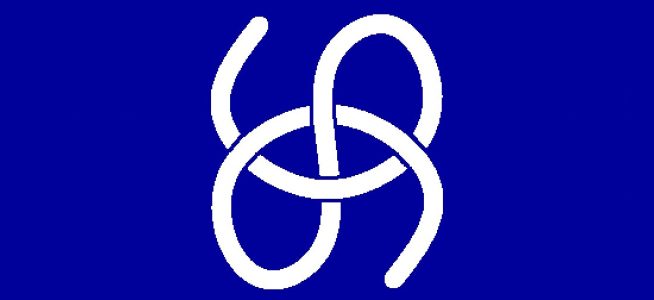The Riemann Hypothesis Perhaps the greatest unsolved problem in mathematics is to explain the distribution of the prime numbers. The overall ``thinning out'' of the primes less than some number $latex {N}&fg=000000$, as $latex {N}&fg=000000$ increases, is well understood, and is demonstrated by the Prime Number Theorem (PNT). In its simplest form, PNT states that … Continue reading The Golden Key to Riemann’s Hypothesis
Tag: Primes
A Topological Proof of Euclid’s Theorem
Theorem (Euclid): There are infinitely many prime numbers. Euclid's proof of this result is a classic. It is often described as a proof by contradiction but, in fact, Euclid shows how, given a list of primes up to any point, we can find, by a finite process, another prime number; so, the proof is constructive. … Continue reading A Topological Proof of Euclid’s Theorem
A Geometric Sieve for the Prime Numbers
In the time before computers (BC) various ingenious devices were invented for aiding the extensive calculations required in astronomy, navigation and commerce. In addition to calculators and logarithms, several nomograms were devised for specific applications, for example in meteorology and surveying. A Nomogram for Multiplication The graph of a parabola $latex {y=x^2}&fg=000000$ can be used … Continue reading A Geometric Sieve for the Prime Numbers
Fermat’s Christmas Theorem
Albert Girard (1595-1632) was a French-born mathematician who studied at the University of Leiden. He was the first to use the abbreviations 'sin', 'cos' and 'tan' for the trigonometric functions. Girard also showed how the area of a spherical triangle depends on its interior angles. If the angles of a triangle on the unit sphere … Continue reading Fermat’s Christmas Theorem
Waring’s Problem & Lagrange’s Four-Square Theorem
$latex \displaystyle \mathrm{num}\ = \square+\square+\square+\square &fg=000000$ Introduction We are all familiar with the problem of splitting numbers into products of primes. This process is called factorisation. The problem of expressing numbers as sums of smaller numbers has also been studied in great depth. We call such a decomposition a partition. The Indian mathematician Ramanujan proved … Continue reading Waring’s Problem & Lagrange’s Four-Square Theorem
The Prime Number Theorem
God may not play dice with the Universe, but something strange is going on with the prime numbers [Paul Erdös, paraphrasing Albert Einstein] The prime numbers are the atoms of the natural number system. We recall that a prime number is a natural number greater than one that cannot be broken into smaller factors. Every natural … Continue reading The Prime Number Theorem
Prime Secrets Revealed
This week, That's Maths in the Irish Times ( TM022 ) reports on two exciting recent breakthroughs in prime number theory. The mathematics we study at school gives the impression that all the big questions have been answered: most of what we learn has been known for centuries, and new developments are nowhere in evidence. … Continue reading Prime Secrets Revealed
A Mersennery Quest
The theme of That's Maths (TM008) this week is prime numbers. Almost all the largest primes found in recent years are of a particular form M(n) = 2n−1. They are called Mersenne primes. The Great Internet Mersenne Prime Search (GIMPS) is aimed at finding ever more prime numbers of this form. The search for the … Continue reading A Mersennery Quest
